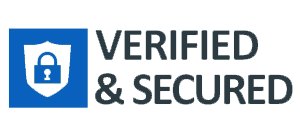Introduction
In today’s competitive market, small businesses continually seek ways to innovate, grow, and maintain operational efficiency. Equipment loans emerge as a powerful tool in this pursuit, offering financial leverage for acquiring essential business assets. Understanding the nuances, especially the benefits of competitive equipment loan interest rates, is fundamental for small businesses aiming to maximize their financial strategy and propel their growth.
The Benefits of Equipment Loans
Immediate access to state-of-the-art equipment can significantly boost a small business’s productivity and competitive edge. Equipment loans circumvent the hefty upfront costs, enabling businesses to preserve their cash flow for other critical operations or unforeseen expenses. This financial flexibility is a cornerstone for sustainable growth and stability in the ever-evolving business landscape.
Understanding Interest Rates in Equipment Loans
Interest rates are a pivotal factor in any loan scenario. They determine the overall cost of borrowing and the affordability of the loan. Equipment loans are no exception. A nuanced understanding of how these rates work, including the differences between fixed and variable rates, empowers businesses to choose terms that align with their financial realities and goals.
How Small Businesses Benefit From Equipment Loan Interest Rates
Securing a lower interest rate means less money paid over the life of the loan, translating into direct savings for the business. These savings can then be reinvested into the business, fueling other areas such as research and development, marketing, or expanding the workforce. Essentially, favorable loan terms can be a catalyst for business growth and expansion.
The Advantages of Terms up to Five Years
Opting for longer loan terms, such as five years, can further ease the financial burden on small businesses. It spreads out the loan repayments over a more extended period, resulting in smaller, more manageable monthly payments. This can be particularly advantageous for businesses in their growth phase, needing to balance investments and income streams carefully.
Tax Benefits and Deductible Interest
A notable advantage of equipment loans is the potential tax benefits. Typically, the interest paid on these loans is tax-deductible, effectively reducing the net cost of borrowing. This aspect, while often overlooked, can make a significant difference in the annual financial planning of a small business. It’s always advisable to consult with a tax professional to understand and maximize these benefits according to your specific situation.
Comparing Lease Terms with Equipment Loans
When acquiring equipment, businesses face the decision to lease or buy. While leasing offers its set of advantages, such as lower initial expenses and flexibility, equipment loans provide ownership and potential tax benefits. Understanding the pros and cons of each option, in relation to your business’s operational needs and financial health, is crucial for making an informed decision.
Case Studies: Success Stories of Small Businesses
Across industries, many small businesses have successfully leveraged equipment loans to drive growth and efficiency. These real-world examples serve as powerful testimonials and learning opportunities. They highlight the strategic use of financial tools to overcome challenges, seize opportunities, and achieve business objectives.
How to Qualify for Equipment Loans
Accessing equipment loans requires understanding the lender’s criteria and ensuring your business aligns with these requirements. Factors such as credit history, business performance, and the equipment’s value are typically considered. Strengthening your application involves clear financial records, a solid business plan, and sometimes, collateral.
The Importance of Reading the Fine Print
Every financial agreement comes with its set of terms and conditions. Thoroughly understanding these is crucial to avoid any unfavorable surprises. This includes being aware of any hidden fees, the implications of late payments, and the specifics of the loan’s structure. A meticulous approach to reviewing these details can save your business from potential pitfalls.
Navigating Through Economic Changes
The economic landscape is continually shifting, affecting interest rates and market conditions. Small businesses must remain agile, keeping abreast of these changes and understanding how they impact existing and potential financial obligations. Securing favorable rates and terms, even amidst economic uncertainty, requires vigilance and a proactive approach.
Expert Tips on Choosing the Right Equipment Loan
Selecting the right equipment loan entails a comprehensive evaluation of various factors. Consider the lender’s credibility, the flexibility of terms, and the alignment with your business’s needs and capabilities. Seeking expert advice or consulting with peers can provide insights and aid in making an informed decision.
Preparing for the Future: Refinancing and Loan Modification
As businesses evolve, so do their financial needs. Refinancing or modifying existing loans can offer more favorable terms, adapt to new business conditions, or manage cash flow more effectively. Staying informed about these options and recognizing when they might benefit your business is part of strategic financial management.
Conclusion and Next Steps
Equipment loans offer small businesses a viable path to growth and operational efficiency. By understanding and leveraging the benefits of competitive interest rates, tax advantages, and flexible terms, businesses can significantly enhance their position and prospects. As you consider the next steps for your business, explore the options, consult with financial experts, and make decisions that align with your long-term objectives and capabilities.
FAQs
- What are the key benefits of equipment loans for small businesses?
- Immediate access to equipment, cash flow preservation, potential tax benefits, and the ability to spread costs over time.
- How do interest rates affect my equipment loan?
- Interest rates determine the total cost of borrowing and monthly repayments. Lower rates mean lower overall costs.
- What are the tax benefits associated with equipment loans?
- Typically, the interest paid on equipment loans is tax-deductible, reducing the overall cost of the loan.
- Should I lease or buy equipment for my business?
- The decision depends on your business’s financial situation, needs, and goals. Both options have their advantages.
- How can I qualify for an equipment loan?
- Qualification typically depends on factors like credit history, business performance, and the value of the equipment being financed.


